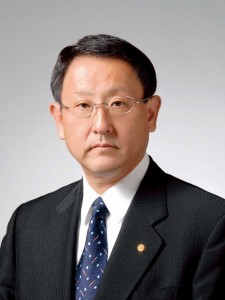
Family Heir and Incoming Toyota CEO Akio Toyoda
Toyota Motor Corp. announced a series of executive changes that will remove the company’s incumbent president from the Japanese automaker’s key executive post and replace him with a member of the company’s founding family.
Akio Toyoda, now Toyota executive vice president, will replace Katsuaki Watanabe as Toyota’s president in June after the company annual general shareholder’s meeting. Fuji Cho, a Toyota veteran, wil retain the chairmanship of Toyota’s board. Watanabe, an intensely ambitious executive who oversaw Toyota’s bid to overtake General Motors Corp. as the world’s largest carmaker, will move into the position of vice chairman.
Reports that Watanabe would be sidelined have been circulating in Japan and throughout the auto industry ever since last month when Toyota reported its largest financial loss in 70 years. Ironically, the loss, which was triggered by worldwide recession and a disastrous decline in sales in the U.S., came just as Toyota appeared to have reached its goal of surpassing General Motors to become the world’s largest automakers. The flagship Toyota division also became the best-selling automotive brand in the U.S. last year for the first time and Toyota – including luxury marque Lexus and the youth-oriented Scion – has replaced Ford as the second largest carmaker in the U.S., capturing almost 16. 5 percent share.
But weak sales in Japan and other overseas markets cut into Toyota’s 2008 sales. Overall, Toyota’s sales dropped 4 percent to 8.972 million units, according to figures released by the Japanese automaker. The drop in sales left Toyota locked in a tight race with GM, which will report its final sales figures Jan. 21.
When he becomes president, Toyoda will face several challenges, among them a steady, demographic decline in the Japanese market, which represents a weakening of the company’s home base in Japan, and the recession-driven drop in sales in the United States, which caught the company’s executives off-guard. The drop in sales has forced Toyota to make dramatic adjustments in production in Japan and the U.S. where the company has a major manufacturing footprint. Among other things, a new, and only partially-completed Mississippi plant has been put on hold, with some observers wondering if it will actually ever be put into operation.
The decline in Toyota’s profitability also has put more pressure on the company’s hybrid strategy, which has turned only modest profits at best, and seen a sharp decline in demand as fuel prices have fallen — but has been one of Watanabe’s key initiatives.
